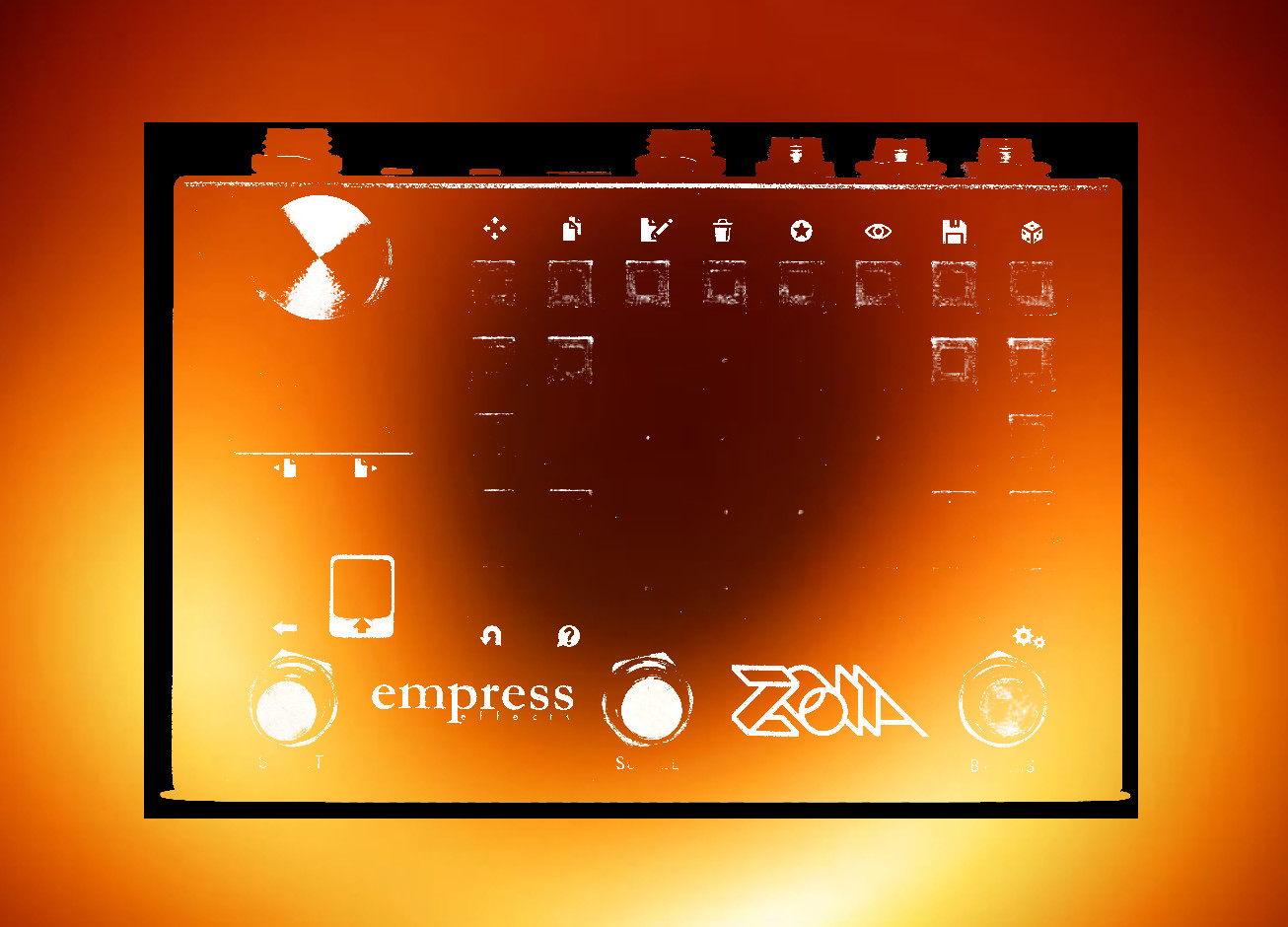If last week was all about how diffusers can create jagged edges, this week is about how they can sheer them off, creating spacious ambient sounds.
Fluttering is a reverb… or delay… or something that transitions, or _flutters_ (see what I did there?), between the two in unexpected patterns. A series of diffusers smear out a delayed signal, creating everything from still, open spaces to swirling, modulated frozen ‘verbs to sounds that transition smoothly between delay and reverb.
You have the option to set two different decay amounts, anywhere from short to frozen, and with the push of a stompswitch, you can modulate the gain of the diffusers, which results in sounds that alternate between delay and reverb, never quite the same twice.
There are also some post effects: an aliaser can be used to lo-fi-ize your ‘verb/delay, and there is an output stage that marries filtering and panning.
The signal path is stereo throughout.
A special thanks to my patrons on Patreon for their support: Rob Flax, Stepan Grammatik, brockstar, Mats Unnerholm, D Sing, Will Scott, drew batchelor, Miguel, Steve Bragg, Joab Eastley, Tomi Kokki, Mitch Lantz, Ben Norland, Daniel Morris, Roman Jakobej, Mark Crosbie, and Steve Codling!
If you would like to support my work on ZOIA, please visit patreon.com/chmjacques
Controls:
Stompswitches:
Left, latching — switches between Decay 1 and Decay 2 (user-definable; by default, a medium length decay and a near-frozen decay that holds onto sounds but allows them to fade over time)
Middle, latching — turns on diffuser modulation
Front panel:
Decay 1 and decay 2 — two different decay settings you can switch between; there is a light next to them that will change color depending on which one is active
Mix — wet/dry mix
There are some blue controls, which allow relate to the reverb/delay and are fairly interactive:
Time-size — sets the length of the delay line; when the patch is set as a reverb, this becomes something of a combination pre-delay/size control
Dampening — cuts highs; it also helps the reverb sound more “reverb-like” and less “delay-like” if it’s set around ~.700 or lower; alternately, it helps the delay sound more “delay-like” when set above that
Diffusion — when diffusion is unmodulated, this sets the diffusion of the diffusers, with larger numbers making for more “reverb-y” sounds; when the diffusion is modulated, this sets the maximum range of the modulation
–There is a light next to this control: when diffusion is modulated, it will begin to change brightness
Mod rate — this controls the modulation rate of both the reverb/delay portion as well as the filter-panning section
There are some magenta controls, which deal with additional effects:
Filter-panning — this is an output stage; it can be quite subtle, but it uses pairs of low-pass and high-pass filters, modulated using slow-moving LFOs set to prime numbers, to shift the emphasis of a given side as the filters open and close; the filters are slightly resonant
Aliaser frequency — determines the frequency of the aliaser. To turn the aliaser off, set it to 1.000. As it descends in frequency, the tone, resonant, and distortion introduce changes pretty radically. The aliaser is set to a fixed mix with the unaffected signal to keep it from overpowering the sound. At high frequencies, I think it can add a nice, shimmer-y quality to the sound; at low frequencies, it adds… well, sample reduction artifacts: distortion, resonance, ring-moddish sounds
Sound clip:



Awesome ambient patch, thank you!